Crescent Low Lunge Pose - Anjaneyasana
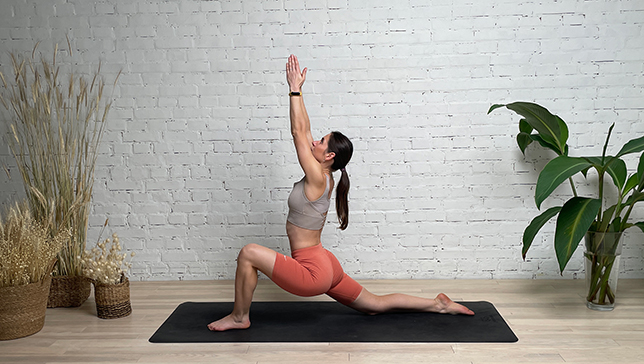
Contents
Crescent Low Lunge Pose or Anjaneyasana gets its name after Lord Hanuman’s mother named Anjani. Another name for Hanuman in the Hindu culture is ‘Anjaneya’. Lord Hanuman is referred to as the mighty God with boundless power and strength, and this pose brings in the same kind of power and strength when practiced the right way. This standing hip opener and heart opener pose is sometimes also known as the Crescent Moon Pose because of how the body looks.
Anjaneyasana is performed by stretching one leg behind and placing the other one in front with the knee bent and the foot on the floor. The arms are raised up with palms joined in Namaste and expanding the chest and stretching the neck.
Anjaneyasana is a deep stretch for the hip flexors and quadriceps. It can also be a little bit of a backbend if you want it to be. Crescent Low Lunge Pose is also called Low Lunge Pose, it’s the first and simple version of the Crescent High Lunge Pose. The low Lunge Pose is considered a base pose as low lunge pose variations can be derived from this pose. Low Lunge Pose helps boost energy in the body and hence can be included in flow yoga sequences.
Pose Detail
- Body Position: Backbend Yoga Poses
- Difficulty: Beginners, Intermediate
- By Type: Chest Opening Yoga Poses, Flexibility Yoga Poses, Hip Opening Yoga Poses, Shoulder Opening Yoga Poses
- By Benefit: Yoga Poses For Weight Loss
Step-by-Step Instructions
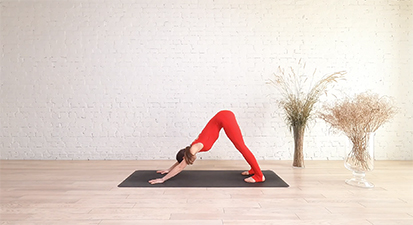
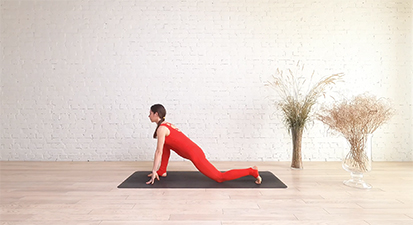
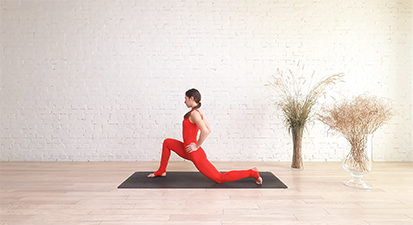
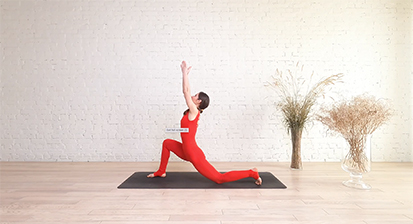
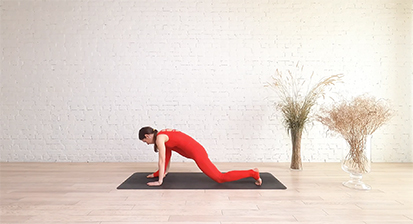
Benefits and Contraindications
Stretches and strengthens entire body
Tones abdominal organs
Stretches and strengthens hips, flexors, hamstrings, quadriceps, ankles
Stretches psoas and lower back muscles
Improves back strength
Opens chest and improves respiratory system
Calms the mind and balances nervous system
Knee injuries ( chair yoga is recommended)
Lower back and neck injuries (avoid back arch/keep hands on blocks or wall/eye gaze ahead.
Photo poses in different angles
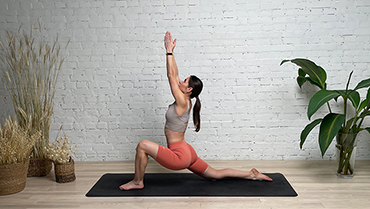
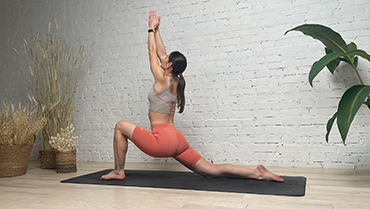
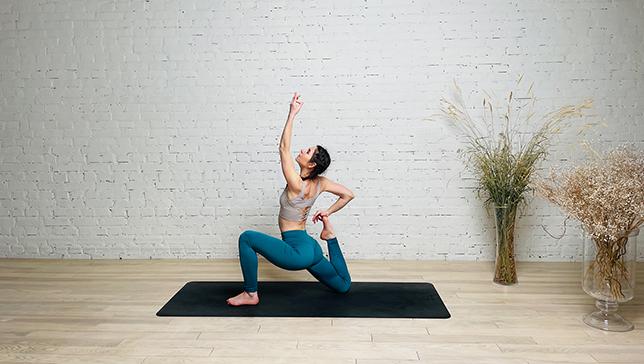
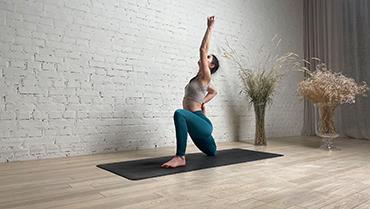
Modifications and Props
- With Blanket – Place a folded blanket underneath the back knee rather than directly resting it to the floor. This is beneficial to attain the pose if you are feeling any soreness in the knee.
- With Aerial strap – Tie a yoga strap aerially. Bring the back leg down to the floor. Hold the strap from both the hands by wrapping it around the wrist. Arch back and hold the pose. The strap help in maintaining balance.
- With Yoga Block – This prop comes handy for those who either have shoulder or neck issues. As they do not raise the arms and bend back, they can keep their hands on the blocks by placing each on either side of the leg.
Technical Tips
- When stepping back to lunge, keep front knee over the ankle. Then release back knee to mat, stabilise, and slide back knee along the mat to a comfortable stretch.
- Press front big toe mound into the mat to ground the foot.
- Hip bones are in one line, strictly perpendicular to the mat.
- When raising the arms, align the biceps with the ears.
- To complete the pose, lift the sternum and arch the back to avoid compressing the neck when gazing upwards. Breathe normally.
Frequently Asked Questions
Modifications & Variations
- Low Lunge Pose With Blocks
- Low Lunge Pose Torso On Leg
- Low Lunge Pose Side Bend Wrist Hold
- Gazelle Pose Aerial
- Low Lunge Pose Twist
- Low Lunge Pose Hands On Lower Back
- King Arthur Pose
Top Preparatory Poses
- Chair Pose
- Downward Facing Dog Pose
- Three Legged Downward Facing Dog Pose
- High Lunge Pose
- Intense Leg Stretch Pose (Standing Wide-Legged Forward Fold Pose)
- Hero Pose
- Reclining Hero Pose
Top Follow-Up Poses
- Half Splits Pose
- Lizard Pose
- Low Lunge Twist
- Revolved Pigeon Pose
- Splits Pose
- Downward Facing Dog Pose